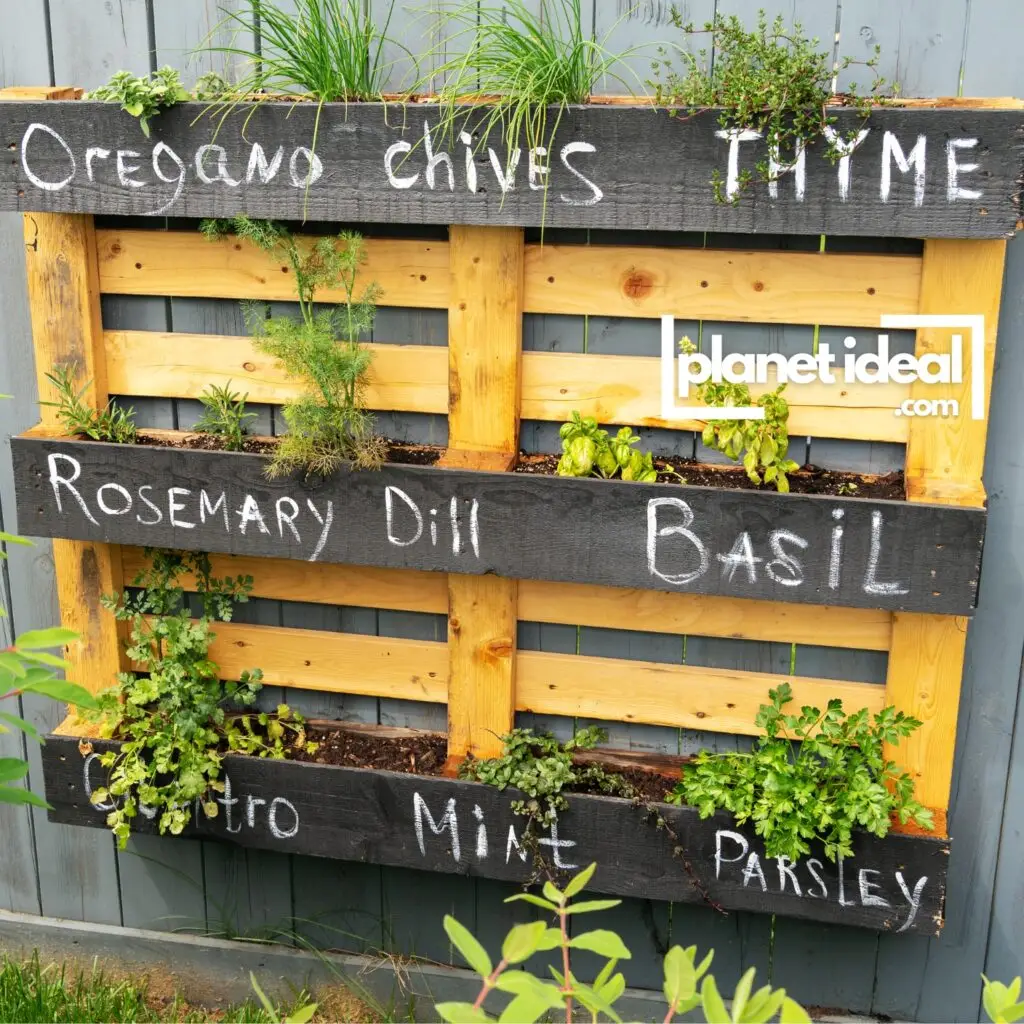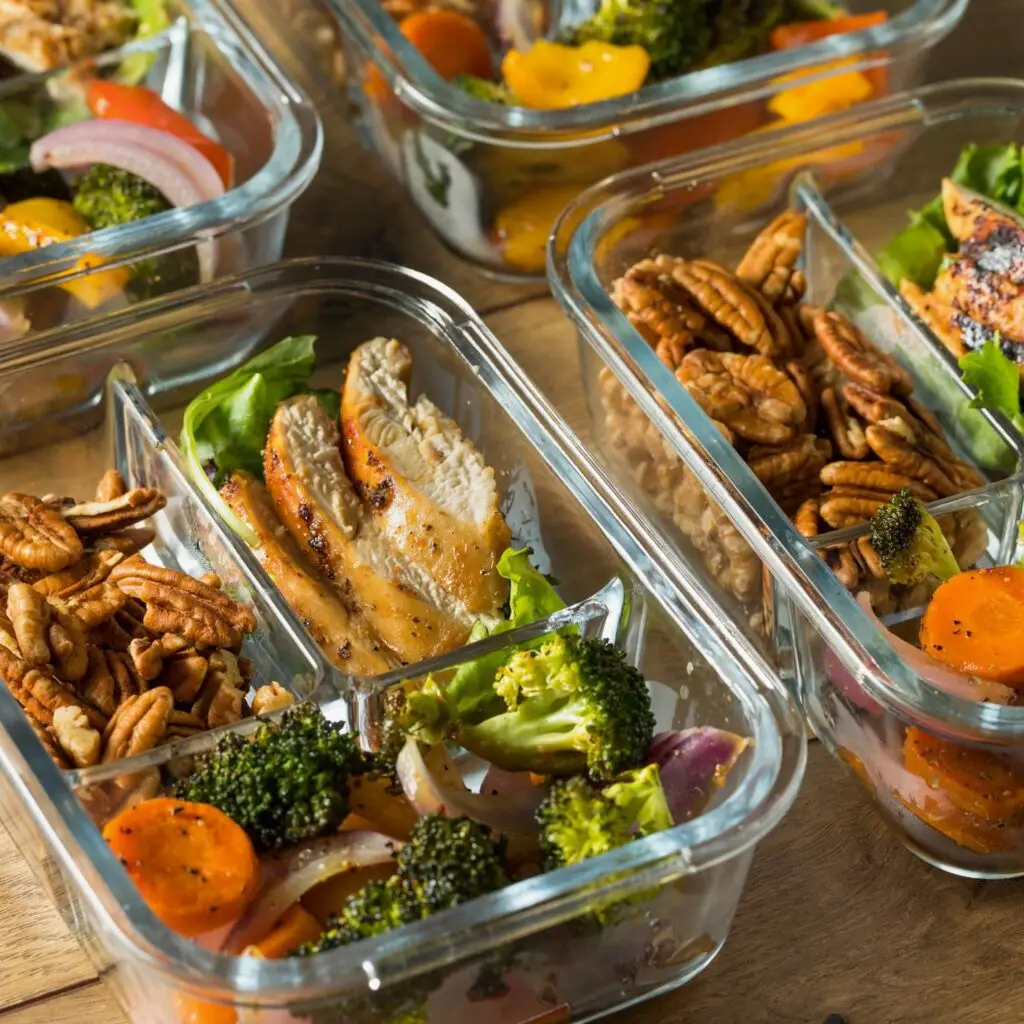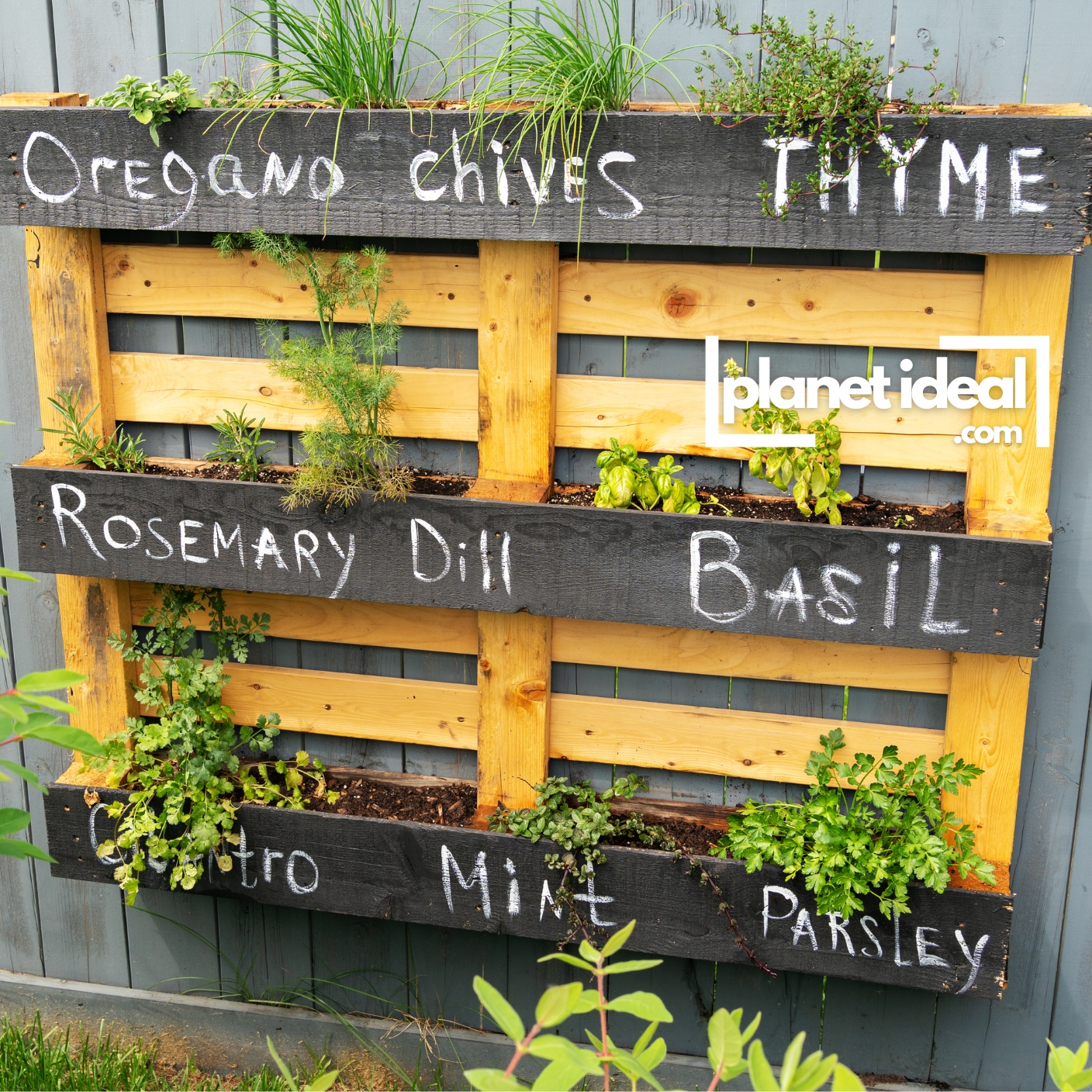Living sustainably can seem daunting, but the truth is, it’s easier than you might think. With a few clever hacks, you can reduce your carbon footprint, save money, and live a healthier, more mindful life—all without drastically changing your routine.
Let’s explore seven sustainable living hacks that actually work and can fit seamlessly into your daily life.
Table of Contents
Toggle1. Upcycle Everyday Items into Something New
One person’s trash is another person’s treasure—especially when it comes to upcycling. Instead of tossing old or unused items into the bin, why not give them a new lease on life? With a little creativity and effort, you can transform items you might otherwise throw away into something useful, stylish, or even downright stunning. Not only does this reduce waste, but it also adds a personal touch to your home or lifestyle.
Why Upcycling Matters
Upcycling is more than just a trendy DIY activity; it’s a sustainable practice that helps reduce landfill waste, conserve resources, and lower your carbon footprint. Plus, it’s a fantastic way to save money and create one-of-a-kind pieces. Whether you’re an experienced crafter or a total beginner, there are countless ways to upcycle everyday items.
Upcycling Ideas to Get You Started
| Item | Upcycled Use |
|---|---|
| Old jars | Storage containers for pantry staples, makeup brushes, or office supplies. Add a coat of paint or some twine for a decorative touch. |
| Worn-out t-shirts | Cut into cleaning rags, braided into rugs, or sewn into reusable shopping bags. |
| Wooden pallets | Turn into furniture like shelves, coffee tables, or garden planters. With a bit of sanding and paint, they can become chic statement pieces. |
| Tin cans | Create rustic plant holders or utensil caddies for your kitchen. |
| Wine corks | Assemble them into coasters, bulletin boards, or decorative wreaths. |
| Old furniture | Refurbish with new paint or upholstery to give it a second life. |
| Broken jewelry | Repurpose beads or charms into new accessories or decorative elements for crafts. |
Pro Tip: Get Inspired!
If you’re stuck for ideas, Pinterest is a goldmine for creative upcycling projects tailored to your needs. Search for specific items you have on hand, and you’ll likely find a plethora of tutorials and designs to spark your imagination. Instagram and YouTube are also excellent platforms for visual learners.
A Showcase of Creativity
Imagine a once-forgotten wooden pallet transformed into a stylish planter brimming with vibrant flowers and fresh herbs. With minimal effort, this simple project turns into a centerpiece for your garden or balcony, proving that even the most mundane objects can become masterpieces.

Upcycling Beyond the Home
Upcycling isn’t limited to personal items or home décor. Consider applying this principle to larger community projects. For example:
- Schools: Encourage students to use old materials for art projects or science experiments.
- Local Businesses: Partner with small businesses to repurpose materials like wood, fabric, or metal into creative signage or functional products.
- Neighborhood Initiatives: Start a swap event where neighbors exchange items they no longer need, inspiring new uses for old possessions.
Wrapping Up
Upcycling is an eco-friendly, wallet-friendly, and creativity-friendly way to turn everyday items into something new and exciting. Whether it’s revamping old furniture, breathing new life into worn-out clothes, or creating unique storage solutions, the possibilities are endless. Plus, every time you upcycle, you’re taking a small but meaningful step toward a more sustainable future.
So, grab that jar, t-shirt, or wooden pallet—and start crafting your next masterpiece!
2. Batch Cook and Freeze to Reduce Food Waste
Meal prepping isn’t just a trend for gym enthusiasts—it’s a brilliant way to save time, money, and food. By cooking in batches, you can use up all your ingredients before they spoil, ensure you have delicious meals ready to go, and reduce the amount of food that ends up in the trash. Plus, it makes hectic weekdays much smoother, as you’ll always have something prepared.
Why Batch Cooking Helps Reduce Food Waste
- Efficient Use of Ingredients: Instead of letting half a bag of spinach or a few stray carrots go bad in the fridge, batch cooking allows you to use up everything before it spoils.
- Portion Control: Pre-portioning meals ensures that you eat the right amount, reducing the likelihood of leftovers being wasted.
- Lower Grocery Costs: When you plan and cook in batches, you can buy ingredients in bulk, which is often cheaper and more sustainable.
Steps to Start Batch Cooking
- Plan Your Meals:
- Take some time at the start of the week to decide what meals you’d like to prepare. Focus on recipes that use overlapping ingredients to minimize waste.
- Create a shopping list based on your meal plan to ensure you only buy what you need.
- Shop Smart:
- Stick to your list to avoid impulse purchases.
- Look for seasonal and local produce, which is often fresher and has a smaller environmental footprint.
- Dedicate a Cooking Day:
- Choose a day (like Sunday) to prep and cook larger portions of your meals.
- Aim for a mix of recipes, like soups, stews, casseroles, and roasted vegetables, which freeze and reheat well.
- Use Freezer-Friendly Containers:
- Invest in reusable glass or silicone containers to store your meals. These are eco-friendly, keep food fresh, and make reheating simple.
- Label each container with the meal name and date so you can easily rotate your meals.
- Portion and Freeze:
- Divide your meals into single-serving portions before freezing. This makes it easy to grab just what you need without defrosting an entire batch.
- Reheat and Enjoy:
- When you’re ready to eat, simply thaw and reheat your meal. This saves time on busy days and prevents the temptation of ordering takeout.

Pro Tips for Successful Batch Cooking
- Focus on Versatile Ingredients: Choose staples like rice, lentils, beans, and vegetables that can be used in multiple dishes.
- Cook What Freezes Well: Some foods, like potatoes or cream-based dishes, don’t freeze as effectively. Research recipes that freeze and reheat beautifully.
- Prep Snacks, Too: While you’re at it, whip up some healthy snacks like granola bars, energy bites, or pre-portioned fruits and veggies for convenience.
Beyond the Kitchen: How Batch Cooking Reduces Waste
Batch cooking has ripple effects that extend beyond your household:
- Cuts Packaging Waste: Buying in bulk and cooking at home reduces reliance on individually packaged meals or snacks.
- Supports Sustainability: By eating more home-cooked meals, you’re likely consuming fewer processed foods, which often have a higher environmental impact.
- Encourages Seasonal Eating: Planning your meals around seasonal produce means you’re enjoying fresher ingredients with a lower carbon footprint.
Wrapping Up
Batch cooking is a win-win for busy lifestyles and sustainable living. It reduces food waste, simplifies your weekly routine, and ensures you’re eating nutritious, homemade meals without the daily hassle of cooking. Whether you’re prepping hearty soups for winter lunches or vibrant stir-fries for quick dinners, a little planning goes a long way.
So, grab your pots and pans, prep those veggies, and fill your freezer with delicious, waste-free meals!
Read More about Zero Waste Lifestyle Here > The Ultimate Guide to Building a Zero-Waste Kitchen
3. Use Vinegar and Baking Soda for Cleaning
Say goodbye to chemical-laden cleaning products and hello to the natural, eco-friendly power duo: vinegar and baking soda. These humble household staples are not only incredibly effective but also non-toxic, biodegradable, and budget-friendly. By swapping out conventional cleaners for these natural alternatives, you’re creating a safer home environment and reducing your environmental impact.
Why Vinegar and Baking Soda Work
- Vinegar: With its natural acidity, vinegar effectively cuts through grease, dissolves mineral deposits, and eliminates odors. It’s a powerhouse for disinfecting and polishing surfaces.
- Baking Soda: This mild abrasive works wonders on grime, neutralizes odors, and acts as a gentle yet powerful scrub for tough stains.
Together, these ingredients create a fizzing reaction that’s perfect for tackling clogged drains, lifting stubborn stains, and deep cleaning.
DIY Cleaning Recipes
- All-Purpose Cleaner:
- Mix 1 part vinegar with 1 part water in a spray bottle.
- Add a few drops of essential oil (like lemon, lavender, or tea tree) for a refreshing scent and additional antibacterial properties.
- Use on countertops, sinks, and other hard surfaces for a quick, natural clean.
- Drain Cleaner:
- Pour ½ cup of baking soda down the drain.
- Follow with 1 cup of vinegar and watch the fizzing action break down clogs and eliminate odors.
- After 15 minutes, rinse with boiling water to flush the drain clean.
- Glass Cleaner:
- Combine 1 part vinegar with 1 part water in a spray bottle.
- Use a lint-free cloth or newspaper to wipe windows and mirrors for streak-free shine.
- Scrubbing Paste:
- Mix baking soda with a small amount of water to create a paste.
- Use it to scrub sinks, tiles, grout, and other tough spots. Add a splash of vinegar for extra fizz and cleaning power.
- Odor Neutralizer:
- Sprinkle baking soda on carpets, upholstery, or mattresses, let it sit for 15–30 minutes, and vacuum up to remove odors.
- Bathroom Cleaner:
- Spray vinegar on bathroom surfaces to dissolve soap scum and hard water stains.
- Sprinkle baking soda on the surface first for extra scrubbing power.

Pro Tips for Natural Cleaning
- Test Surfaces First: Vinegar’s acidity can damage certain surfaces like granite, marble, and hardwood floors. Always test in an inconspicuous area before using.
- Storage: Store your DIY cleaners in glass spray bottles to maintain their effectiveness and reduce plastic waste.
- Mix Fresh Batches: Some natural cleaners, especially those with essential oils, work best when freshly prepared.
The Benefits of Going Natural
- Eco-Friendly: Unlike many store-bought cleaners, vinegar and baking soda break down harmlessly in the environment.
- Healthier Home: Reduce exposure to harmful chemicals that can irritate skin, eyes, and respiratory systems.
- Cost-Effective: These ingredients are much cheaper than most commercial cleaning products, making them a budget-friendly choice.
Wrapping Up
Switching to natural cleaning methods doesn’t just benefit the planet—it transforms your home into a safer, fresher, and more sustainable space. With simple ingredients like vinegar and baking soda, you can tackle almost any cleaning task with confidence.
So, grab your spray bottles, whip up some DIY solutions, and clean your way to a greener home!
4. Opt for Digital Alternatives to Paper
Going paperless isn’t just for the workplace—it’s a lifestyle shift that can significantly reduce waste, save resources, and streamline your daily routine. With digital technology at our fingertips, making the transition from paper to digital has never been easier. From cutting down on paper bills to embracing e-books, you can reduce clutter at home while making a positive impact on the planet.
Why Go Digital?
Switching to digital alternatives reduces deforestation, energy use, and pollution caused by paper production and disposal. It also makes organizing your life more convenient. No more hunting for lost receipts or misplacing notebooks—everything you need is stored in one compact, searchable device.
Ideas to Go Digital
- Switch to E-Bills and Online Statements:
- Opt for paperless billing with your utility companies, banks, and other service providers.
- Use apps or email folders to organize and store statements for easy access.
- Read E-Books or Listen to Audiobooks:
- Download e-books to a tablet, e-reader, or smartphone instead of buying physical copies.
- Explore audiobooks, which are perfect for multitasking or relaxing on the go.
- Check out platforms like Project Gutenberg, which offers free access to thousands of classic books.
- Take Digital Notes:
- Replace paper notebooks with a tablet and stylus, or use apps like Evernote, Notion, or Google Keep.
- These tools allow you to organize your thoughts, share notes, and search for keywords instantly.
- Scan and Store Important Documents:
- Use scanning apps to digitize old paperwork, like receipts, contracts, or family recipes.
- Store these files securely in cloud storage services like Google Drive, Dropbox, or OneDrive.
- Digitalize Event Invitations and Cards:
- Send e-cards or digital invitations for birthdays, weddings, or holidays.
- Platforms like Canva or Paperless Post make it easy to create beautiful and personalized designs.
- Use Digital Planners and Calendars:
- Replace paper calendars and planners with apps like Google Calendar or Trello.
- Sync these tools across devices for easy scheduling and reminders.
- Streamline Your Reading:
- Subscribe to digital magazines, newspapers, and newsletters to stay updated without the bulk of printed materials.

Pro Tips for a Seamless Digital Transition
- Backup Regularly: Use cloud storage or external hard drives to ensure your files are safe in case of device malfunctions.
- Invest in the Right Tools: A reliable tablet, e-reader, or laptop can make your digital experience more enjoyable and efficient.
- Organize Your Files: Create folders and use tags to keep your digital documents neat and easy to find.
Benefits of Going Paperless at Home
- Eco-Friendly: Reduces demand for paper, saving trees, water, and energy.
- Less Clutter: Eliminates piles of paper, making your home more organized and stress-free.
- Cost-Effective: Saves money on notebooks, pens, books, and other paper-related items.
- More Convenient: Access your documents, books, and notes anytime, anywhere.
Wrapping Up
Going digital is a simple yet powerful way to make your home more sustainable while embracing modern convenience. Whether it’s trading bookshelves for a compact e-reader or swapping sticky notes for a sleek app, every step helps reduce paper waste.
So, cozy up with your favorite device, sip that cup of tea, and enjoy the clutter-free, eco-friendly perks of a paperless lifestyle!
5. Shop Second-Hand for Clothes and Furniture
Fast fashion and mass-produced furniture have a significant impact on pollution, resource depletion, and waste. By choosing to shop second-hand, you can step off the consumer treadmill, save money, and uncover unique treasures with a story to tell. Whether it’s a vintage jacket or a charming mid-century coffee table, thrifted items bring character and sustainability to your wardrobe and home.
Why Choose Second-Hand?
- Eco-Friendly: Buying pre-loved items reduces the demand for new products, cutting down on the resources and energy required for production. This helps to mitigate the environmental toll of industries like fast fashion and mass furniture manufacturing.
- Cost-Effective: Second-hand goods are often sold at a fraction of the price of new ones, allowing you to stretch your budget further.
- Unique Finds: Shopping second-hand means you’re more likely to find one-of-a-kind items, from vintage clothing to retro home décor, that stand out from mass-market designs.
- Supports Local Economies: Many thrift stores are run by charities or small businesses, so your purchase directly benefits your community.
Benefits of Shopping Second-Hand
- Reduces Waste: Extending the life of items that would otherwise end up in landfills is a simple way to embrace sustainability.
- Encourages Creativity: Thrift shopping inspires you to mix and match styles, upcycle furniture, or repurpose old items in new and exciting ways.
- Connects to the Past: Vintage and antique pieces often carry a sense of history and craftsmanship that newer items can lack.
Where to Shop Second-Hand
- Thrift Stores: Local shops like Goodwill, Salvation Army, or independent stores often carry a mix of clothing, furniture, and household items at affordable prices.
- Online Platforms: Explore platforms like eBay, Poshmark, Depop, or Facebook Marketplace for second-hand goods from all over the world.
- Consignment Shops: These stores specialize in gently-used designer clothing and high-end furniture.
- Flea Markets and Garage Sales: Great for finding quirky, unique items and negotiating prices.
- Vintage Boutiques: If you’re looking for curated pieces, vintage shops often offer handpicked collections of timeless finds.
Tips for Second-Hand Shopping
- Have a Plan:
- Make a list of what you’re looking for to stay focused.
- Measure your space if shopping for furniture to ensure the piece will fit.
- Inspect Items Carefully:
- Check for stains, tears, or missing parts, especially on furniture or clothing.
- Don’t be afraid of minor imperfections—many can be repaired or upcycled.
- Try It On:
- For clothes, make sure they fit well or consider tailoring them for a custom look.
- Think Long-Term:
- Invest in timeless pieces that will serve you for years, rather than trendy items you might quickly tire of.
- Be Patient:
- The beauty of second-hand shopping is the thrill of the hunt. It may take a few trips to find the perfect item.

The Impact of Second-Hand Choices
- Fast Fashion: Shopping second-hand helps counter the environmental damage caused by fast fashion, which generates immense textile waste and pollution.
- Mass-Produced Furniture: Reusing furniture reduces the need for new production, which often involves deforestation and harmful manufacturing practices.
Wrapping Up
Shopping second-hand for clothes and furniture is a simple yet impactful way to embrace sustainability while adding character to your wardrobe and home. With every thrifted find, you’re giving items a second life, supporting your community, and reducing your ecological footprint.
So, the next time you’re looking to refresh your style or furnish your space, skip the mall and explore the charm and possibilities of second-hand shopping!
Read More >> The Rise Of Slow Fashion : Why It’s more than just a Trend
6. Switch to Energy-Efficient Appliances
Investing in energy-efficient appliances is a smart move for your wallet, your home, and the planet. While these appliances might have a higher upfront cost, they make up for it with significant savings on your energy bills over time. Plus, they help reduce greenhouse gas emissions, making them a win-win for sustainable living.
Why Choose Energy-Efficient Appliances?
- Lower Energy Bills: Energy-efficient appliances use less electricity or water, leading to noticeable savings on utility bills.
- Eco-Friendly: Reduced energy consumption means lower carbon emissions, contributing to a healthier planet.
- Longer Lifespan: Many energy-efficient appliances are built to last, providing better value over time.
- Increased Home Value: Homes equipped with energy-efficient upgrades are more appealing to buyers and can command higher resale values.
Energy-Efficient Upgrades to Consider
| Appliance | Why It’s Worth It |
|---|---|
| LED Light Bulbs | Use 75% less energy and last up to 25 times longer than traditional incandescent bulbs. |
| Energy Star-Rated Fridge | Reduces electricity consumption significantly compared to older models. |
| Smart Thermostats | Optimize heating and cooling by learning your habits and adjusting automatically. |
| Front-Load Washing Machines | Use less water and energy compared to top-load models. |
| Induction Cooktops | More energy-efficient than gas or electric stoves, and they heat up faster. |
| Tankless Water Heaters | Provide hot water on demand, using less energy than traditional water heaters. |
| Energy-Efficient Dishwashers | Use less water and energy per cycle while delivering the same cleaning power. |
Pro Tips for Making the Switch
- Check for Rebates and Incentives:
- Many governments and utility companies offer rebates or tax credits for purchasing energy-efficient appliances. Check online or contact your local provider to see what’s available in your area.
- Look for the Energy Star Label:
- Appliances with the Energy Star label meet strict energy efficiency guidelines set by the U.S. Environmental Protection Agency.
- Do Your Research:
- Compare the energy consumption of different models before purchasing. Look for appliances with high efficiency ratings and additional features that suit your lifestyle.
- Maintain Your Appliances:
- Regular maintenance ensures that your appliances run efficiently and last longer. For instance, clean your refrigerator coils and replace HVAC filters regularly.

Hidden Benefits of Energy-Efficient Appliances
- Reduced Noise Levels: Many energy-efficient appliances are designed to operate quietly, enhancing the comfort of your home.
- Smart Features: Appliances like smart thermostats and fridges often come with advanced technology, such as remote control via smartphone apps or notifications for maintenance needs.
- Lower Water Usage: Many energy-efficient appliances, like dishwashers and washing machines, also use less water, further reducing your environmental footprint.
The Bigger Picture: Environmental Impact
Switching to energy-efficient appliances helps combat climate change by reducing reliance on fossil fuels. If every household adopted these appliances, the cumulative energy savings would be immense, resulting in lower greenhouse gas emissions and a more sustainable energy future.
Wrapping Up
Upgrading to energy-efficient appliances isn’t just an investment in your home—it’s a step toward a greener, more sustainable lifestyle. With long-term savings, eco-friendly benefits, and even potential rebates, making the switch is a decision you won’t regret.
So, whether you’re redesigning your kitchen, upgrading your laundry room, or simply replacing a single light bulb, choose energy-efficient options and make a difference for both your household and the planet!
Read More about Saving Energy > How to Save Energy for Every Room in the House
7. Start a Mini Herb Garden
Growing your own mini herb garden is a delightful way to embrace sustainability while adding fresh flavors to your cooking. Even if you live in a small space without a backyard, you can create a thriving herb garden right on your windowsill or balcony. It’s a rewarding hobby that reduces reliance on store-bought herbs (and their packaging) while connecting you to the joys of homegrown food.
Why Grow a Mini Herb Garden?
- Fresh and Flavorful: Homegrown herbs taste better than store-bought ones, which often lose flavor during transportation and storage.
- Eco-Friendly: Growing your own herbs reduces the environmental footprint associated with mass production, packaging, and shipping.
- Cost-Effective: A one-time investment in seeds or starter plants saves money over buying fresh herbs regularly.
- Healthier Cooking: Having fresh herbs readily available encourages you to cook more at home, adding healthy, flavorful touches to your meals.
How to Start Your Herb Garden
- Choose a Sunny Spot:
- Herbs thrive in natural light, so pick a sunny windowsill, balcony, or a well-lit area indoors.
- South-facing windows are ideal, but east- or west-facing ones can also work.
- Select Your Herbs:
- Begin with easy-to-grow favorites like basil, mint, parsley, thyme, rosemary, and cilantro.
- Consider what you use most in your cooking or experiment with new flavors.
- Pick the Right Containers:
- Use small pots or containers with good drainage holes to prevent waterlogging.
- Repurpose items like mason jars or tin cans by adding a drainage layer of pebbles at the bottom.
- Plant Your Herbs:
- Start with seeds, seedlings, or cuttings from an existing plant.
- Use high-quality potting soil, and mix in some compost for added nutrients.
- Water and Maintain:
- Water your herbs regularly, but don’t overdo it—most herbs prefer soil that’s moist but not soggy.
- Trim your herbs frequently to encourage healthy growth and prevent them from becoming too leggy.
- Fertilize Naturally:
- Use compost, eggshells, or coffee grounds as natural fertilizers to provide essential nutrients.
- Harvest with Care:
- Snip herbs as needed, taking care not to over-harvest so the plants can continue to grow.
Creative Ideas for Your Herb Garden
- Hanging Herb Garden: Use vertical space by hanging pots from a rack or wall hooks.
- Recycled Planters: Upcycle old jars, tins, or wooden boxes to create a charming, eco-friendly garden.
- Hydroponic Herb Kits: For a soil-free option, invest in a hydroponic system that lets you grow herbs using water and nutrients.

Benefits Beyond the Kitchen
- Improved Air Quality: Herbs like mint and basil can help purify the air in your home.
- Stress Relief: Caring for plants has been shown to reduce stress and boost mental well-being.
- Educational Opportunity: A mini garden is a great way to teach kids (or yourself) about plant care and sustainability.
Pro Tips for Herb Garden Success
- Rotate Your Pots: Turn your pots occasionally so that all sides of the plants get equal sunlight.
- Watch for Pests: Keep an eye out for common pests like aphids and treat infestations with natural remedies like neem oil.
- Use Your Herbs Regularly: Frequent harvesting helps herbs stay productive and prevents them from flowering too soon.
Wrapping Up
Starting a mini herb garden is a simple yet impactful step toward a greener lifestyle. It’s easy to set up, requires minimal space, and rewards you with fresh, aromatic herbs for your meals. Plus, it adds a touch of nature to your home, creating a peaceful and inspiring environment.
So, grab some pots, pick your favorite herbs, and let your green thumb shine as you cultivate a mini garden bursting with flavor and sustainability!
Read More about Starting Your Own Garden in the City > How to Start an Urban Garden
At Planet Ideal, we’re on a mission to make sustainable living accessible for everyone. Our team of eco-enthusiasts writes short, snappy, and easy-to-digest articles designed to inspire real change without overwhelming. From practical tips to innovative ideas, we’re here to prove that living green can be stylish, convenient, and enjoyable. Join us as we empower individuals, families, and communities to embrace eco-friendly lifestyles—one step, one story, and one solution at a time.






